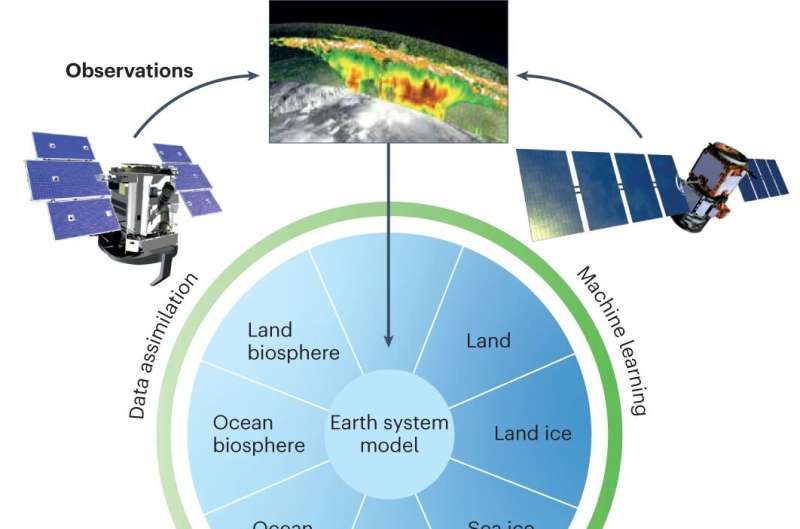This article has been reviewed according to Science X's editorial process and policies. Editors have highlighted the following attributes while ensuring the content's credibility:
fact-checked
peer-reviewed publication
proofread
Artificial Intelligence: A step change in climate modeling predictions for climate adaptation

As of today, climate models face the challenge of providing the high-resolution predictions—with quantified uncertainties—needed by a growing number of adaptation planners, from local decision-makers to the private sector, who require detailed assessments of the climate risks they may face locally.
This calls for a step change in the accuracy and usability of climate predictions that, according to the authors of the paper "Harnessing AI and computing to advance climate modeling and prediction," can be brought by Artificial Intelligence.
The Comment was published in Nature Climate Change by a group of international climate scientists, including CMCC Scientific Director Giulio Boccaletti and CMCC President Antonio Navarra.
One proposed approach for a step change in climate modeling is to focus on global models with 1-km horizontal resolution. However, the authors explain, although kilometer-scale models have been referred to as "digital twins" of Earth, they still have limitations and biases similar to current models. Moreover, given the high computational costs, they impose limitations on the size of simulation ensembles, which are needed both to calibrate the unavoidable empirical models of unresolved processes and to quantify uncertainties.
Overall, kilometer-scale models do not offer the step change in accuracy that would justify accepting the limitations that they impose.
Rather than prioritizing kilometer-scale resolution, authors propose a balanced approach focused on generating large ensembles of simulations at moderately high resolution (10–50 km, from around 100 km, which is standard today) that capitalizes on advances in computing and AI to learn from data.
By moderately increasing global resolution while extensively harnessing observational and simulated data, this approach is more likely to achieve the objective of climate modeling for risk assessment, which involves minimizing model errors and quantifying uncertainties and enables wider adoption.
1,000 simulations at 10-km resolution cost the same as 1 simulation at 1-km resolution. "Although we should push the resolution frontier as computer performance increases, climate modeling in the next decade needs to focus on resolutions in the 10–50 km range," write the authors. "Importantly, climate models must be developed so that they can be used and improved on through rapid iteration in a globally inclusive and distributed research program that does not concentrate resources in the few monolithic centers that would be needed if the focus is on kilometer-scale global modeling."
More information: Tapio Schneider et al, Harnessing AI and computing to advance climate modelling and prediction, Nature Climate Change (2023). DOI: 10.1038/s41558-023-01769-3
Journal information: Nature Climate Change
Provided by CMCC Foundation - Euro-Mediterranean Center on Climate Change



















